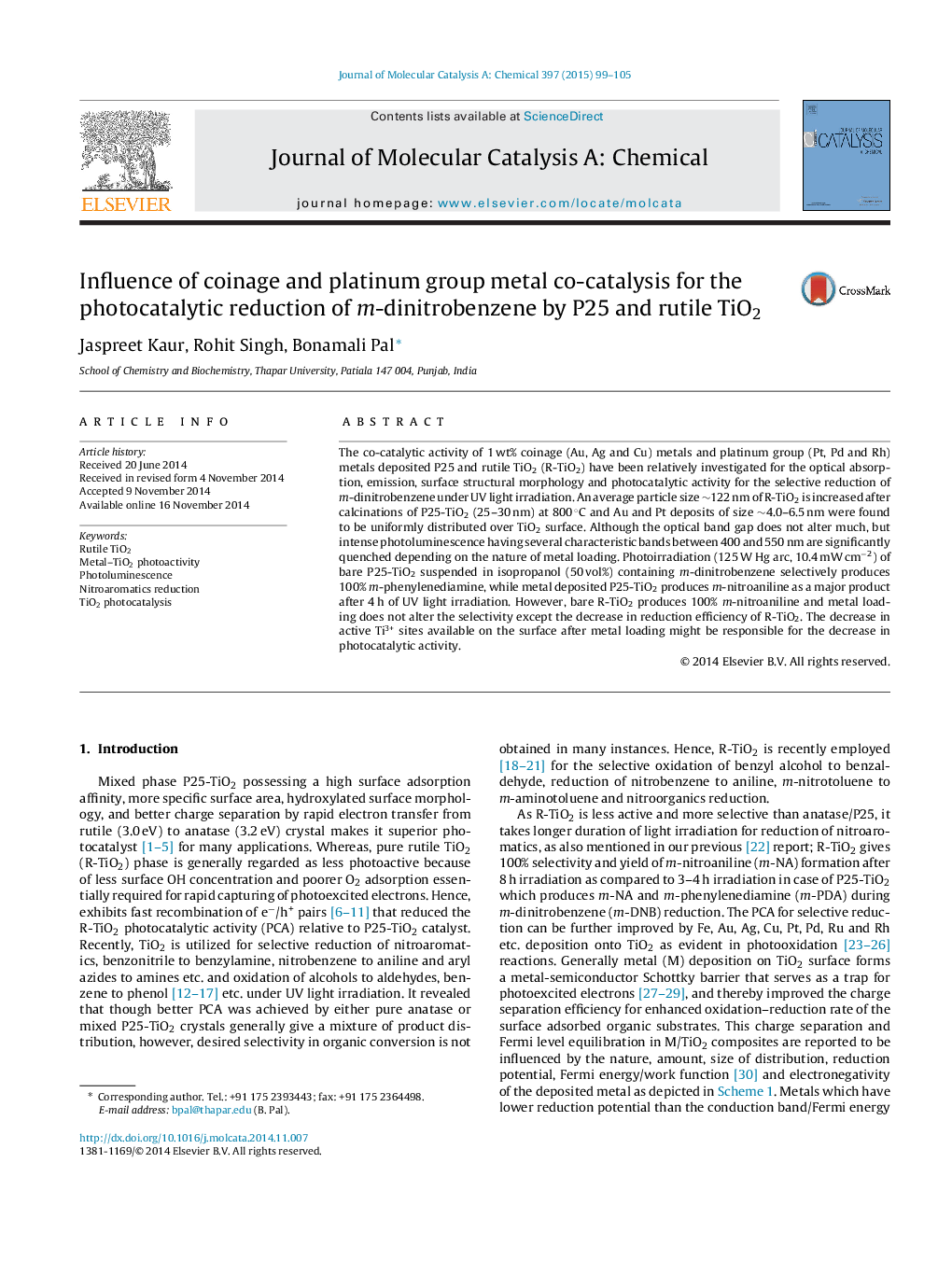| کد مقاله | کد نشریه | سال انتشار | مقاله انگلیسی | نسخه تمام متن |
|---|---|---|---|---|
| 65087 | 48382 | 2015 | 7 صفحه PDF | دانلود رایگان |

• Co-catalytic effect of coinage and platinum group metals on P25 and rutile TiO2.
• Photoreduction of m-DNB with various metals under UV-light irradiations.
• 1% metal deposited-P25 (M = Au, Ag, Cu, Pt, Pd, Rh) produces m-NA as major product.
• Metal loading does not alter the selectivity except the decrease in reduction efficiency.
• The surface active Ti3+ sites might be decreased after metal deposition.
The co-catalytic activity of 1 wt% coinage (Au, Ag and Cu) metals and platinum group (Pt, Pd and Rh) metals deposited P25 and rutile TiO2 (R-TiO2) have been relatively investigated for the optical absorption, emission, surface structural morphology and photocatalytic activity for the selective reduction of m-dinitrobenzene under UV light irradiation. An average particle size ∼122 nm of R-TiO2 is increased after calcinations of P25-TiO2 (25–30 nm) at 800 °C and Au and Pt deposits of size ∼4.0–6.5 nm were found to be uniformly distributed over TiO2 surface. Although the optical band gap does not alter much, but intense photoluminescence having several characteristic bands between 400 and 550 nm are significantly quenched depending on the nature of metal loading. Photoirradiation (125 W Hg arc, 10.4 mW cm−2) of bare P25-TiO2 suspended in isopropanol (50 vol%) containing m-dinitrobenzene selectively produces 100% m-phenylenediamine, while metal deposited P25-TiO2 produces m-nitroaniline as a major product after 4 h of UV light irradiation. However, bare R-TiO2 produces 100% m-nitroaniline and metal loading does not alter the selectivity except the decrease in reduction efficiency of R-TiO2. The decrease in active Ti3+ sites available on the surface after metal loading might be responsible for the decrease in photocatalytic activity.
Figure optionsDownload high-quality image (195 K)Download as PowerPoint slide
Journal: Journal of Molecular Catalysis A: Chemical - Volume 397, February 2015, Pages 99–105